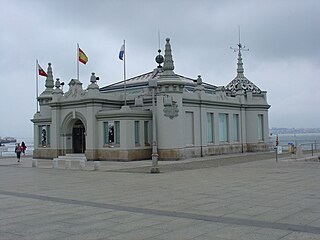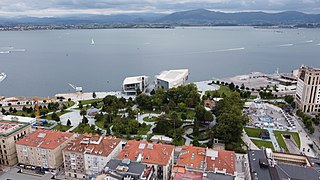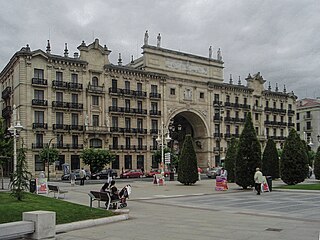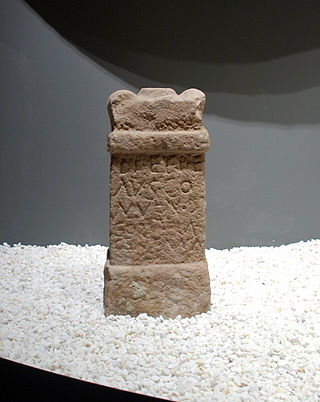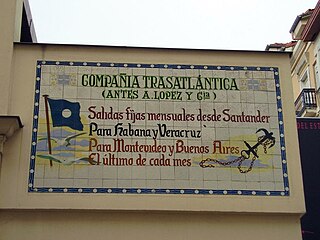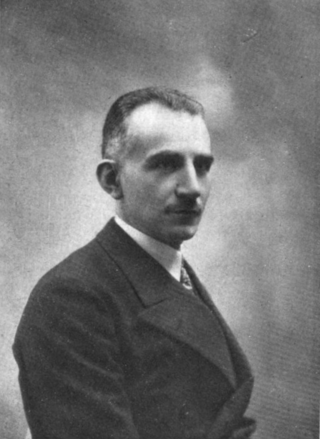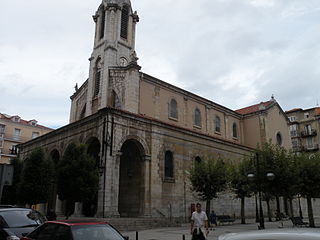Self-guided Sightseeing Tour #1 in Santander, Spain
Legend
Guided Free Walking Tours
Book free guided walking tours in Santander.
Guided Sightseeing Tours
Book guided sightseeing tours and activities in Santander.
Tour Facts
0.9 km
13 m
Experience Santander in Spain in a whole new way with our free self-guided sightseeing tour. This site not only offers you practical information and insider tips, but also a rich variety of activities and sights you shouldn't miss. Whether you love art and culture, want to explore historical sites or simply want to experience the vibrant atmosphere of a lively city - you'll find everything you need for your personal adventure here.
Activities in SantanderIndividual Sights in SantanderSight 1: Palacete del Embarcadero
The Palacete del Embarcadero is a building in the city of Santander, in Cantabria (Spain). The Palacete del Embarcadero is located on the promenade, next to the promenade and gardens of Pereda. Designed by Javier González de Riancho, with a portico facing the sea and angular turrets, it is a building designed in 1920 and completed in 1932. It functioned as a passenger station, later used as a barracks for the Armed Police, and since it was reopened in 1985, it has served as an exhibition and conference hall. It is owned by the Port Authority, being one of the spaces enabled by the port of Santander to promote and disseminate maritime-port culture and heritage. It is dedicated to both its own exhibitions and traveling exhibitions.
Sight 2: Jardines de José María Pereda
The Pereda Gardens is a public park in the city of Santander, in Cantabria, Spain. They are located on land reclaimed from the sea that was used as a port dock in 1805 and was officially inaugurated in 1905 coinciding with the celebration of the Arts and Industries Exhibition. It is a very busy space due to its centrality and proximity to the promenade, as well as the Botín Centre.
Sight 3: Faro Santander
The Banco de Santander building is the headquarters of the aforementioned bank, located on Paseo Pereda in the city of the same name, in Spain, and separated from the sea by the Pereda Gardens. It is the work of the architect Javier González de Riancho. The bank's decision to keep its headquarters in this building, in the city where it was born, was maintained even after announcing the rental and sale of all its properties in 2007.
Sight 4: Museo de Prehistoria y Arqueología de Cantabria
The Museum of Prehistory and Archeology of Cantabria (MUPAC) is a museum specialized in prehistoric archeology and also has collections of the ancient and medieval world. It is located in the city of Santander, in Cantabria (Spain).
Wikipedia: Museo de Prehistoria y Arqueología de Cantabria (ES)
Sight 5: Mercado del Este
Get Ticket*The Mercado del Este, also popularly known as Plaza del Este, is an old market located in the Cantabrian capital, Santander. It is currently occupied by various shops and hospitality establishments.
Sight 6: Estatua del cardenal Ángel Herrera Oria
Ángel Herrera Oria was a Spanish journalist and Roman Catholic politician and later a cardinal. He established the Instituto Social León XIII to promote the social doctrine of the Roman Catholic Church and named it in honor of Pope Paul VI who elevated him to the rank of cardinal in 1965.
Sight 7: Iglesia de Santa Lucía
The church of Santa Lucía is an eclectic Catholic church located in the Spanish city of Santander (Cantabria). It dates from the second half of the nineteenth century and has been declared an Asset of Cultural Interest.
Share
How likely are you to recommend us?
Disclaimer Please be aware of your surroundings and do not enter private property. We are not liable for any damages that occur during the tours.
GPX-Download For navigation apps and GPS devices you can download the tour as a GPX file.
